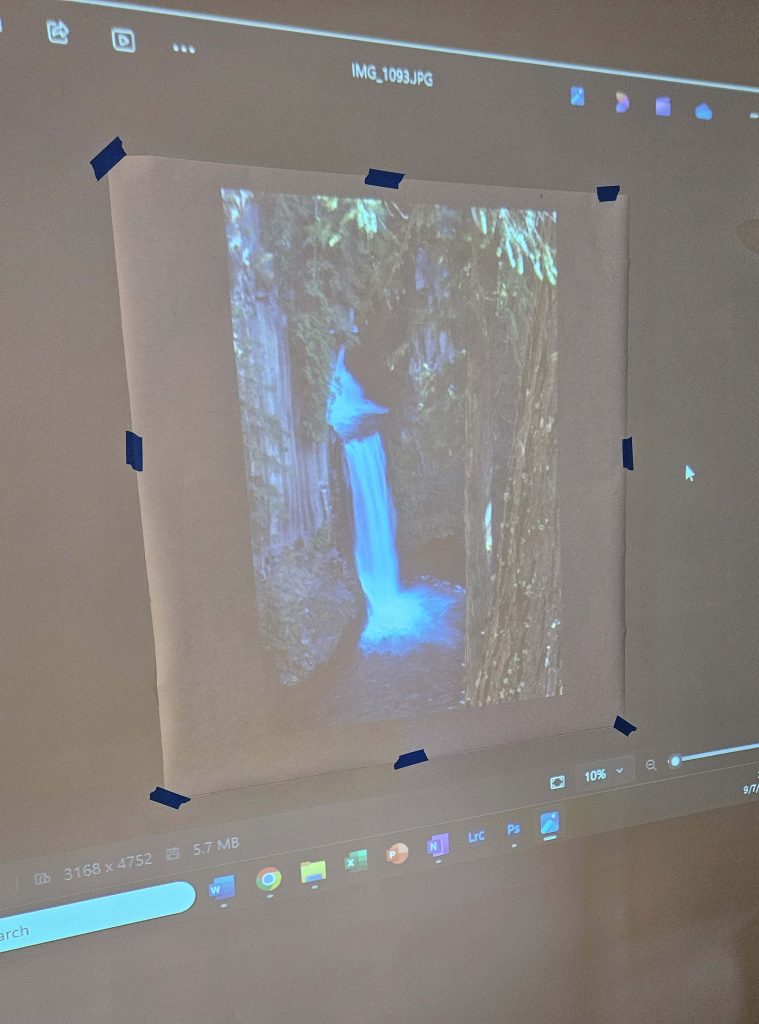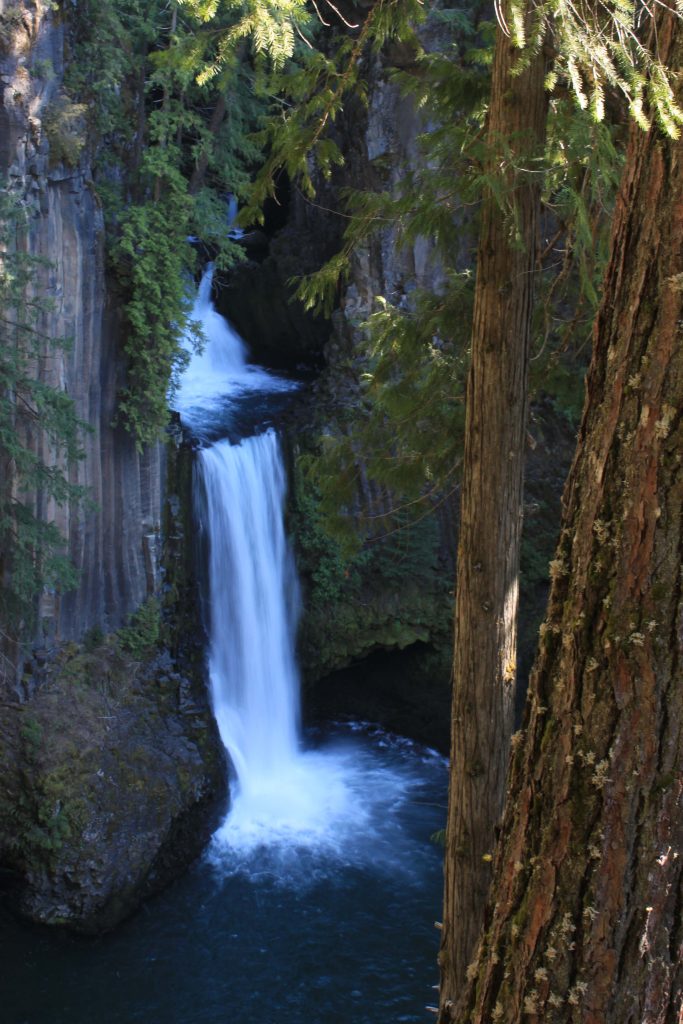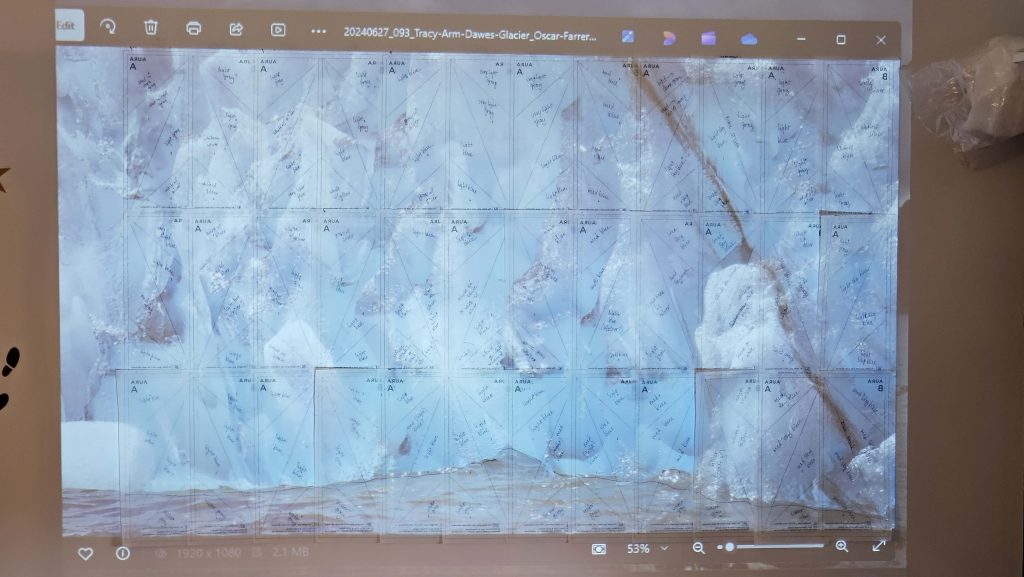On Saturday, I got out the projector and some large pieces of paper and outlined three potential quilts – the Oregon waterfall and the two bargello quilts. I’m pretty sure I have all of the fabrics for the Oregon waterfall quilt, but I haven’t yet started putting that one together yet. I think I need a full day for that one, so I don’t foresee that happening anytime soon. (I have some pretty busy non-quilting weekends coming up over the next few weeks.)

This was an interesting process. First, trying to trace an image that disappears into shadow if you stand in the wrong place is a pain in the ass. Second, trying to line up a ruler – in this case, a yardstick – with a projected image is actually a lot harder than I thought it would be. I mean, how hard could it be? Line up the straight edge of the yardstick with the straight edge of the image. So, so much harder than it looks. One side of the image was shorter than the yardstick, so that one was easy. But the other was not, so I needed a waypoint. I am 100% sure none of the horizontal lines I drew are straight. There’s no way.
The Oregon waterfall image was far easier than the other two. After all, it was just a matter of outlining the different areas of the image that would be covered by different areas of fabric. For the most part, this was straightforward. I drew lines, I made notes, I labeled different parts of the image. Now all I have to do is make all of the template pieces and put the thing together. That is a project for another weekend.
The bargello quilts were another story. I drew out both of them because I had the projector on and it was just easier to do both while my brain was immersed in the logistics of them. All I really did was draw a rudimentary grid, labeling the water line and providing some structure for the rest of it, then outline each image as if I was going to do it with the technique I’ll use on the Oregon waterfall image. Each of the bargello quilts will be about 30” x 50”, and I was a little surprised to find that some areas of the images were much smaller than I’d imagined they would be when projected on the wall. I’m not quite sure how well that will translate to the bargello pattern, but I haven’t yet overlaid the full horizontal grid lines over it yet to see how well it’ll work.
Now that I have the images on paper, I can start to produce those grids to see whether or not what I have in my head will actually work!





